A block of mass 50 kg is kept on another block of mass 1 kg as shown in figure. A horizontal force of 10 N is applied on the 50kg block. (All surface are smooth). Find
(g=10m/s2)
Force exerted by B on A.
The correct Answer is:510 N
To solve the problem of finding the force exerted by block B on block A, we will follow these steps:
Step 1: Identify the forces acting on the blocks
- Block A (1 kg) is on top of block B (50 kg).
- A horizontal force of 10 N is applied to block B.
- The gravitational force acting on block A is m1⋅g=1kg⋅10m/s2=10N.
- The gravitational force acting on block B is m2⋅g=50kg⋅10m/s2=500N.
Step 2: Determine the acceleration of block B
Using Newton's second law, the net force acting on block B can be calculated:
F=m⋅a
For block B:
10N=50kg⋅aB
Solving for aB:
aB=10N50kg=0.2m/s2
Step 3: Determine the force exerted by block B on block A
The force exerted by block B on block A (denoted as N2) can be found using the weight of block A and the acceleration of block B. Since block A is not accelerating horizontally (it is at rest relative to block B), the normal force N2 must balance the weight of block A and provide the necessary force to accelerate it:
N2=m1⋅g+m1⋅aB
Substituting the values:
N2=1kg⋅10m/s2+1kg⋅0.2m/s2
N2=10N+0.2N=10.2N
Step 4: Conclusion
The force exerted by block B on block A is 10.2N.
- Block A (1 kg) is on top of block B (50 kg).
- A horizontal force of 10 N is applied to block B.
- The gravitational force acting on block A is m1⋅g=1kg⋅10m/s2=10N.
- The gravitational force acting on block B is m2⋅g=50kg⋅10m/s2=500N.
Using Newton's second law, the net force acting on block B can be calculated:
F=m⋅a
For block B:
10N=50kg⋅aB
Solving for aB:
aB=10N50kg=0.2m/s2
The force exerted by block B on block A (denoted as N2) can be found using the weight of block A and the acceleration of block B. Since block A is not accelerating horizontally (it is at rest relative to block B), the normal force N2 must balance the weight of block A and provide the necessary force to accelerate it:
N2=m1⋅g+m1⋅aB
Substituting the values:
N2=1kg⋅10m/s2+1kg⋅0.2m/s2
N2=10N+0.2N=10.2N
The force exerted by block B on block A is 10.2N.
Topper's Solved these Questions
- BOOK - MOTIONCHAPTER - NEWTON'S LAWS OF MOTION & FRICTION EXERCISE - Questions For Practice25videos
NEWTON'S LAWS OF MOTION & FRICTION
- BOOK - MOTIONCHAPTER - NEWTON'S LAWS OF MOTION & FRICTION EXERCISE - Exercise - 1 (SECTION-A:- String Constrained, Wedge Constrained, Newtons Law theory Question, Equillibrium Questions (Normal and Tension), Problems with Acceleration (F=ma), Wedge problems)27videos
NEWTON'S LAWS OF MOTION & FRICTION
- BOOK - MOTIONCHAPTER - NEWTON'S LAWS OF MOTION & FRICTION EXERCISE - Exercise - 3 Section-B12videos
NEWTON'S LAWS OF MOTION & FRICTION
- BOOK - MOTIONCHAPTER - MODERN PHYSICS -1EXERCISE - EXERCISE-4 ( LEVEL- II)39videos
MODERN PHYSICS -1
- BOOK - MOTIONCHAPTER - NLM & FRICTIONEXERCISE - EXERCISE-4 ( LEVEL-II)15videos
NLM & FRICTION
Similar Questions
A block of mass 50 kg is kept on another block of mass 1 kg as shown in figure. A horizontal force of 10 N is applied on the 1 kg block. (All surface are smooth). Find (g=10m/s2)

Force exerted by B on A.View SolutionA block of mass 50 kg is kept on another block of mass 1 kg as shown in figure. A horizontal force of 10 N is applied on the 50kg block. (All surface are smooth). Find
(g=10m/s2)
Acceleration of block A and B.View Solution
Knowledge Check
- Question 1 - Select One
A block of mass 3kg is at rest on a rough inclined plane as shown in the figure. The magnitude of net force exerted by the surface on the block will be
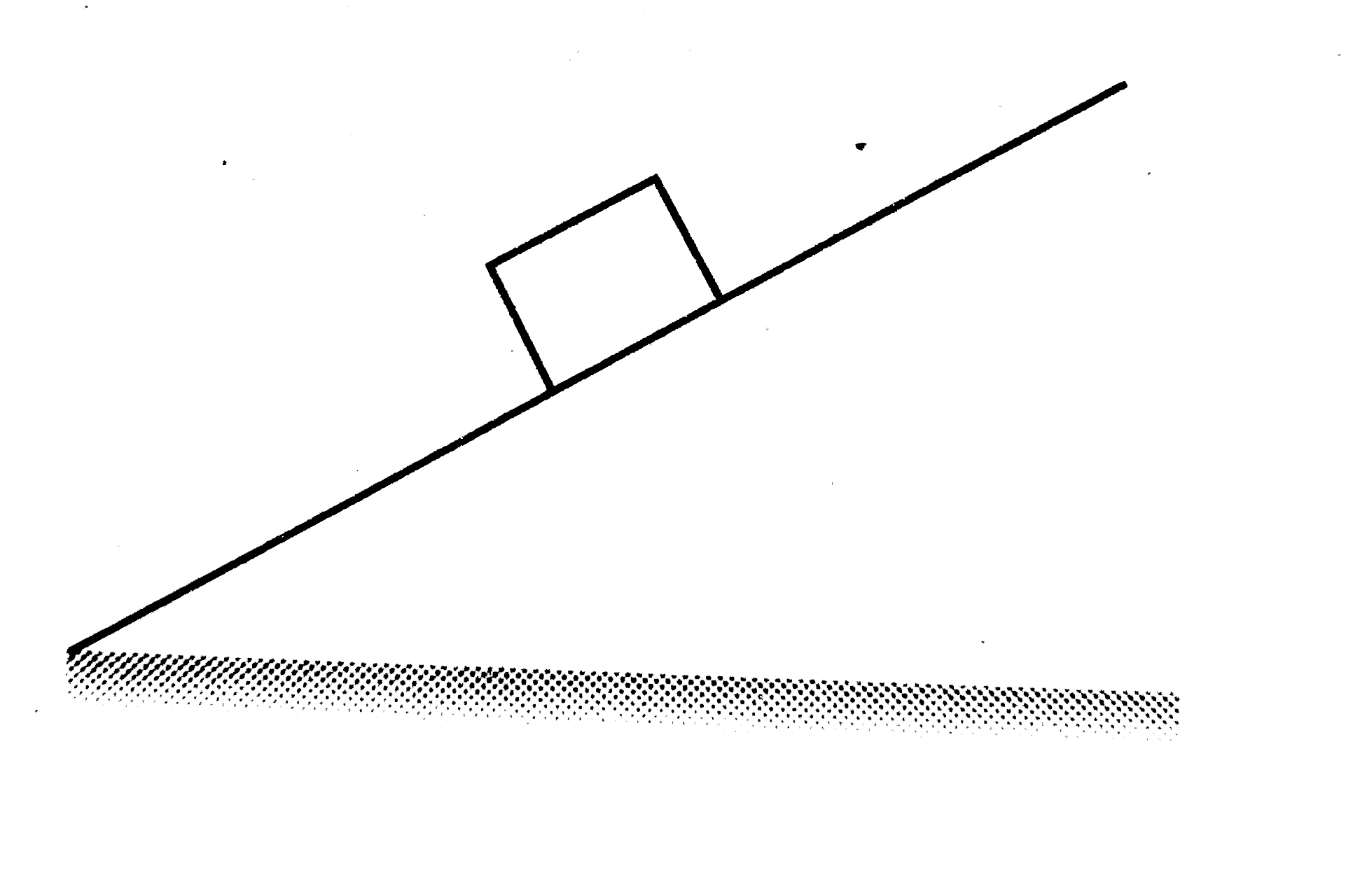 A26NB19.5NC10ND30N
A26NB19.5NC10ND30N
A block of mass 50 kg is kept on another block of mass 1 kg as shown in figure. A horizontal force of 10 N is applied on the 1 kg block. (All surface are smooth). Find (g=10m/s2)

Acceleratin of block A and B.View SolutionA block of mass 10 kg is moving on a rough surface as shown in figure. The frictional force acting on block is :-
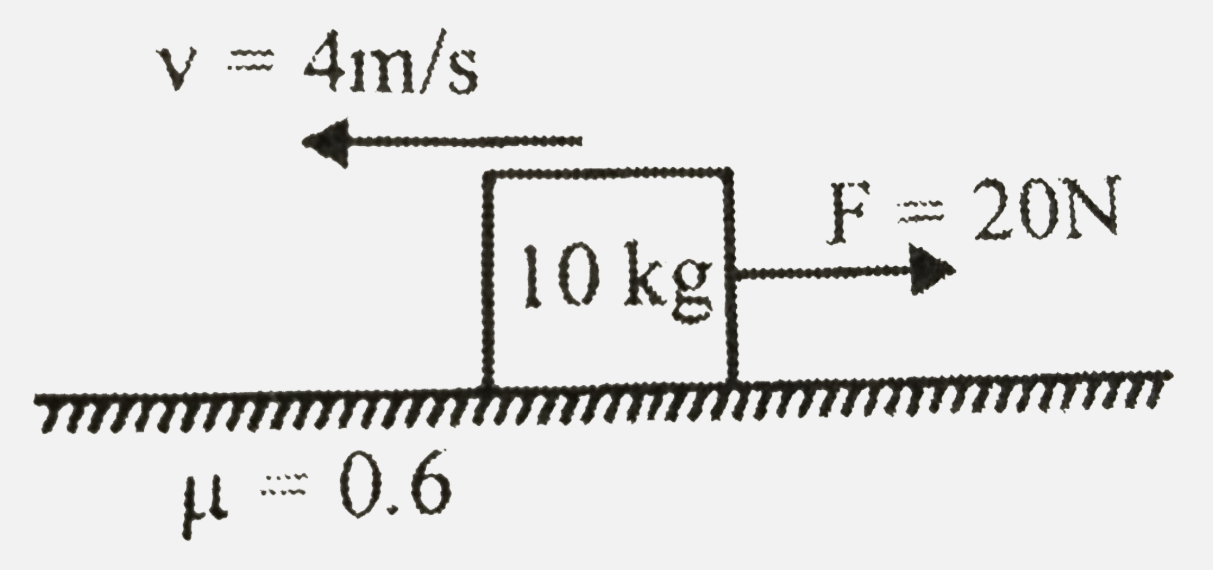 View Solution
View SolutionA block of mass 6 kg is kept on rough surface as shown in figure. Find acceleration and friction force acting on the block. (Take g=10m/s2)
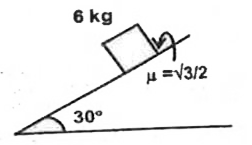 View Solution
View SolutionA small block B is placed on block A of mass 5kg and length 20 cm. Initially block B in near the right end of block A .A constant horizontal force of 10N is applied to the block A All surfaces are smooth . Find the time elapsed (in sec) before blocks B separates from A.
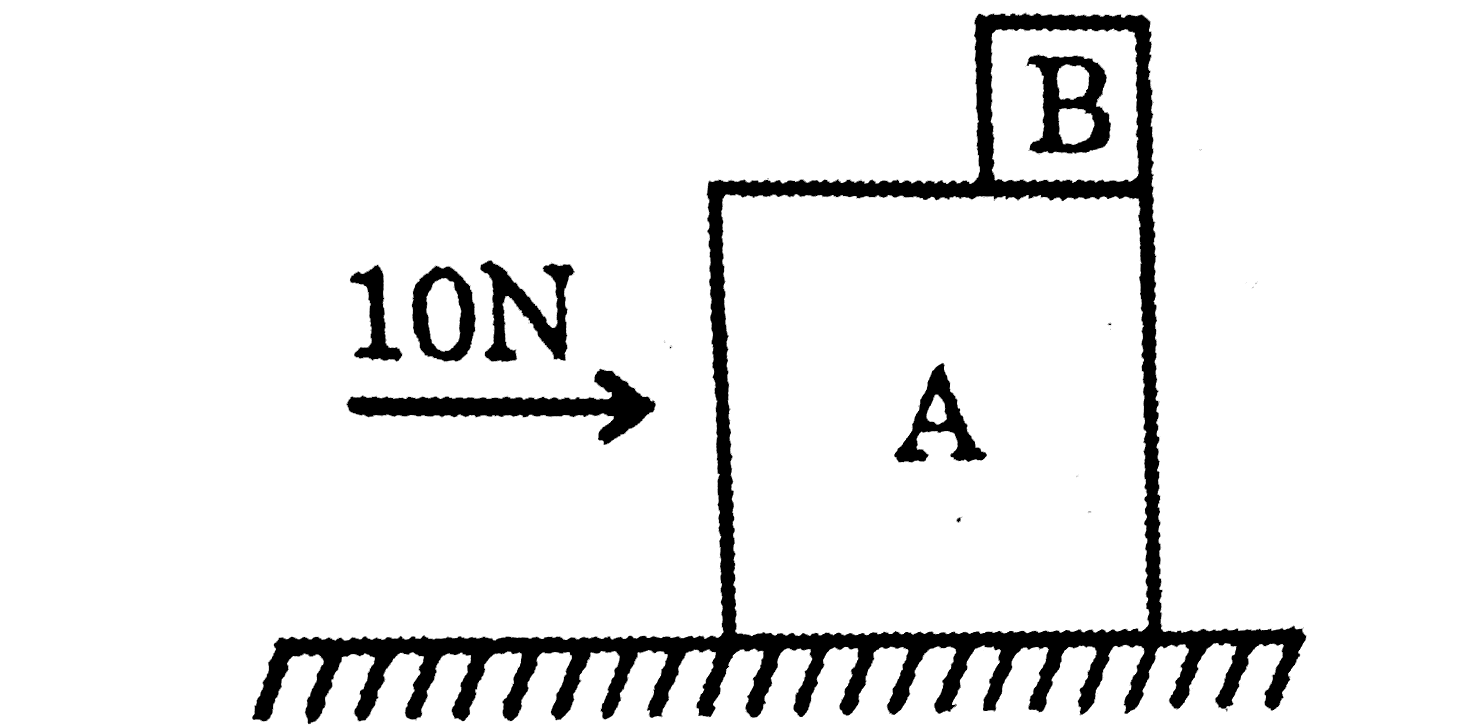 View Solution
View SolutionThree blocks of masses 3kg,2kg and 1kg are placed side by side on a smooth surface as shown in figure. A horizontal force of 12N is applied on 3kg block. Find the net force on 2kg block.
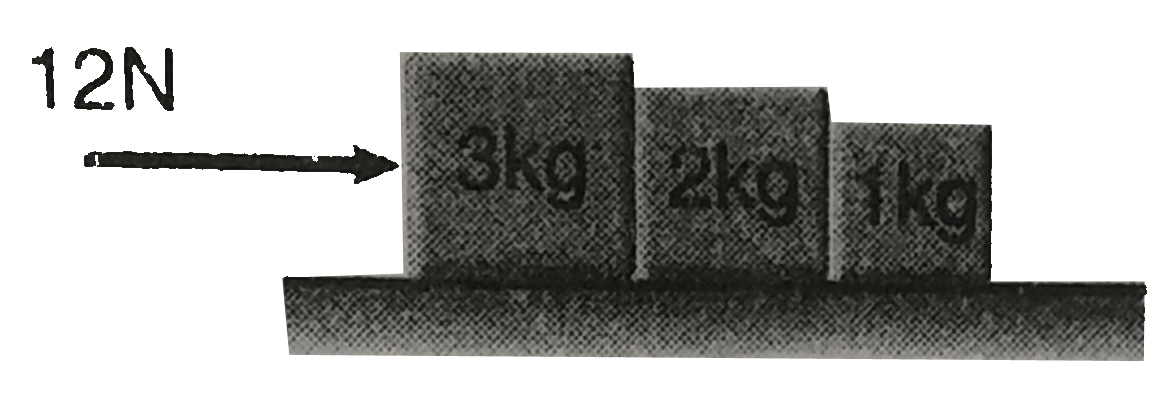 View Solution
View SolutionFind the accelerations a1,a2,a3 of the three blocks shown in figure if a horizontal force of 10 N is applied on a. 2 kg block, b. 3 kg block, c. 7 kg block. Take g=10ms2.
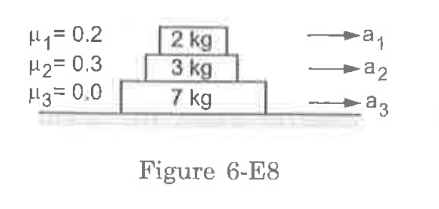 View Solution
View SolutionTwo blocks of masses 4kg and 2kg are placed side on a smooth horizontal surface as shown in the figure. A horizontal force of 20N is applied on 4kgblock. Find
(a) the acceleration of each block.
(b) the normal reaction between two blocks.
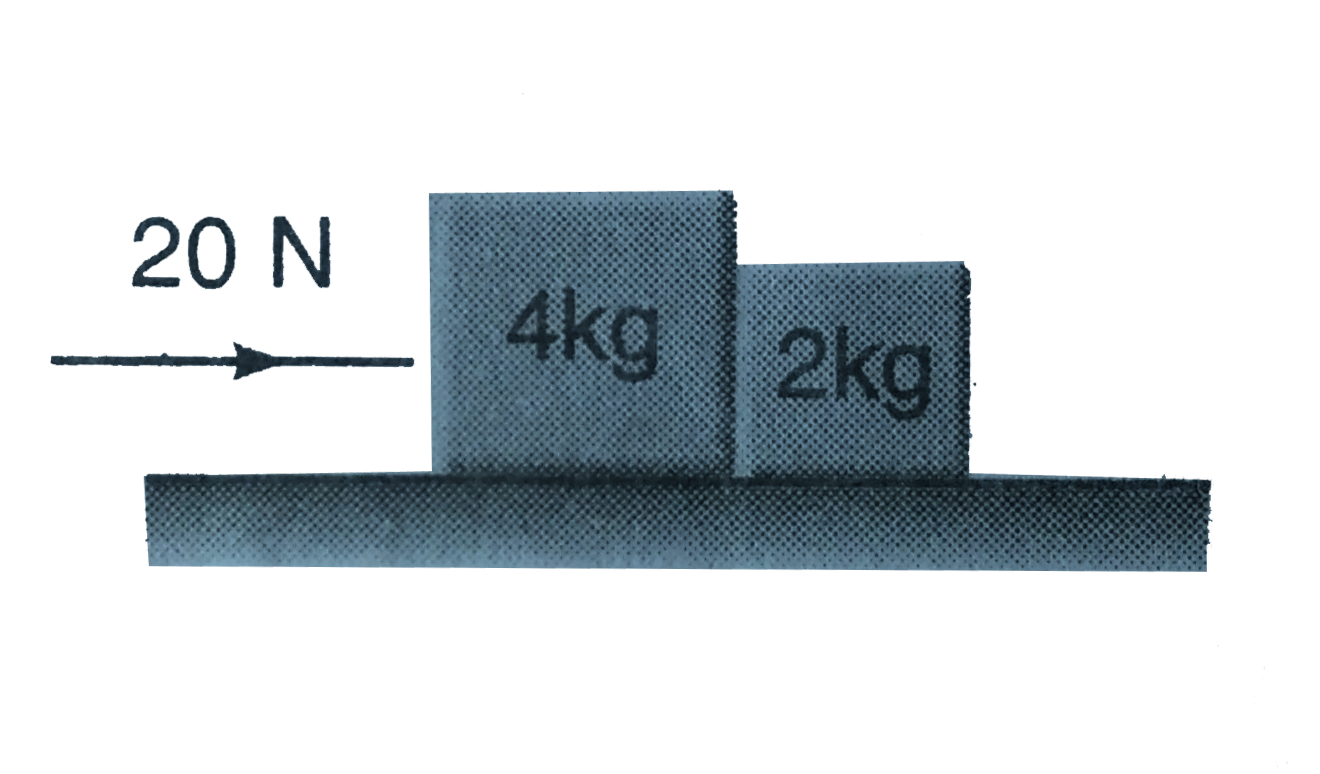 View Solution
View Solution

